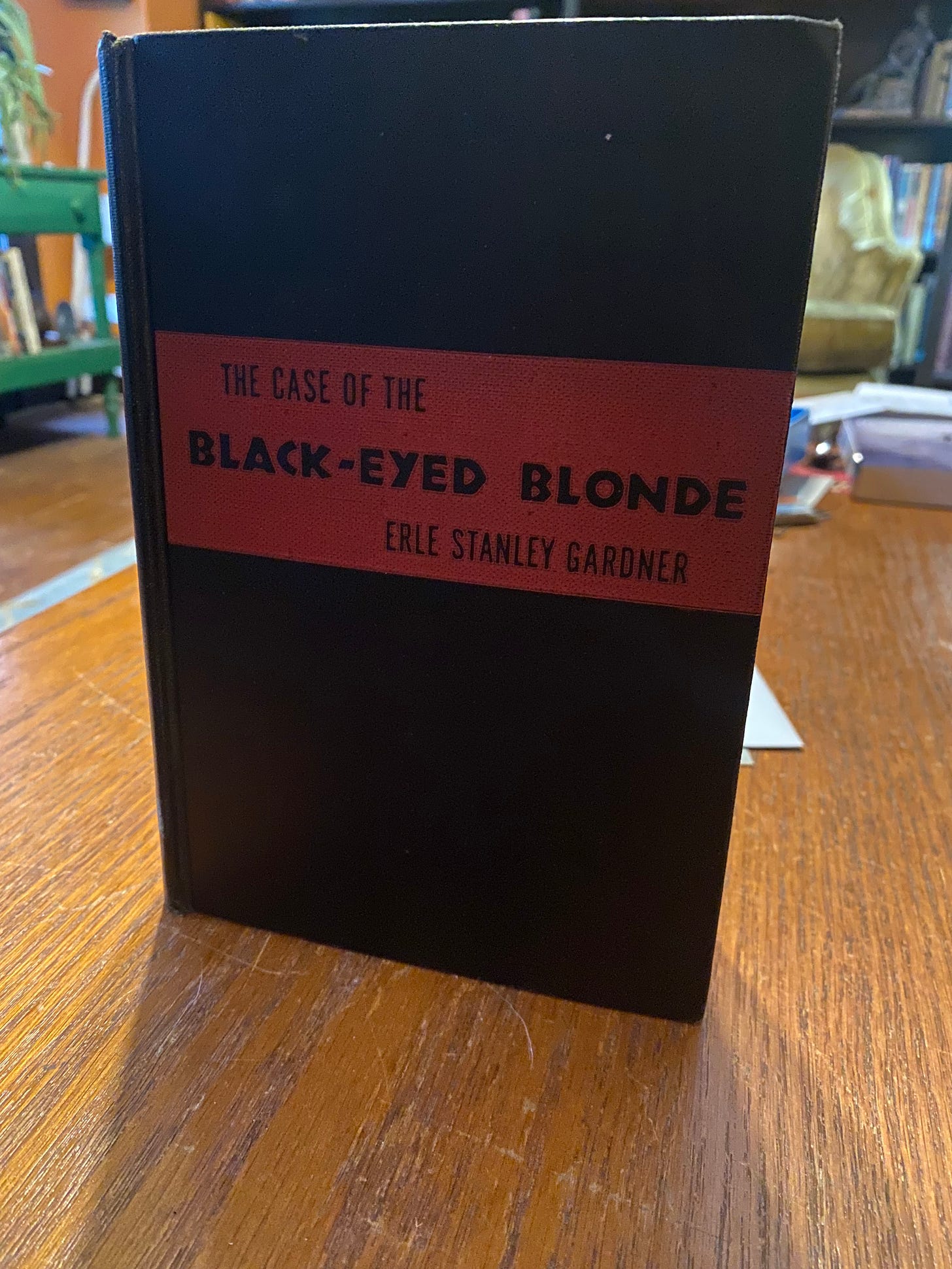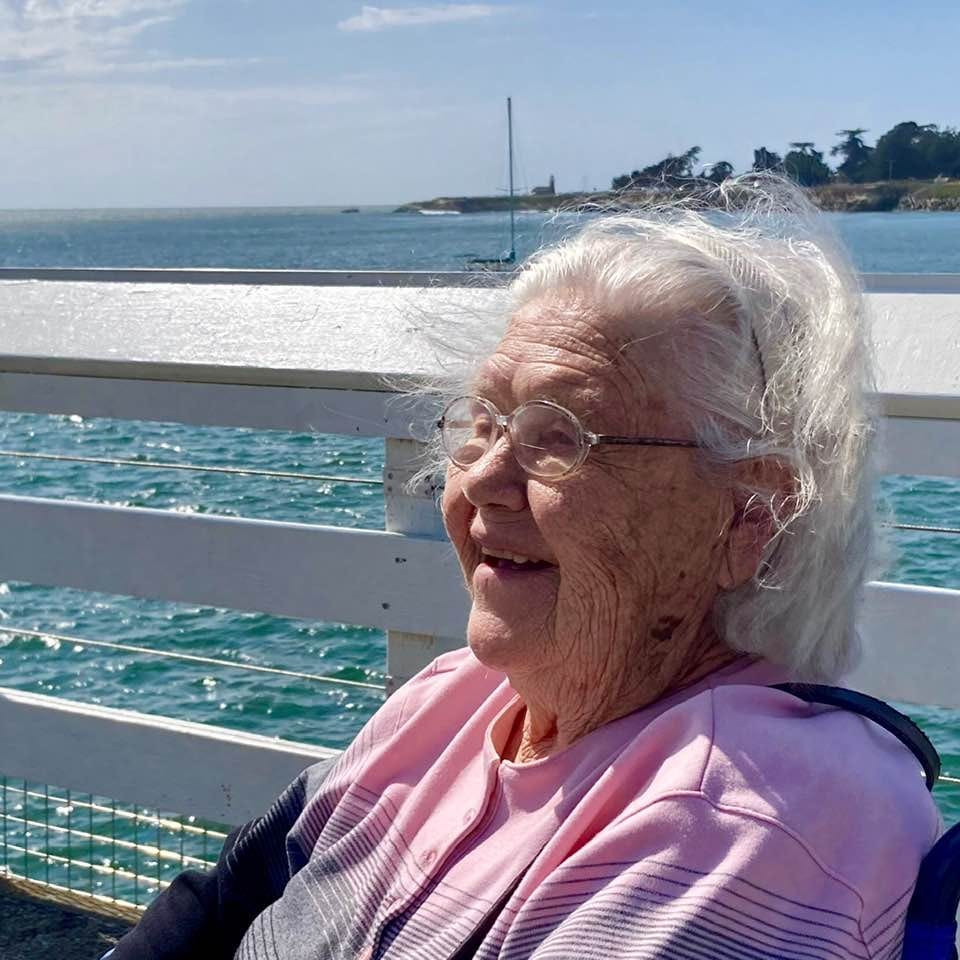Let them die: People also deserve mercy
I ran across a robot in Price Chopper
Please consider supporting The Front Page with a paid subscription: HERE
Three years ago this month, propped on pillows on a sofa in her house in Los Gatos, California, my Aunt Sylvia drank two liquids, the first to stop her from throwing up and the second to end her life.
It was a long, eventful life. She was 94. She married twice, first to an Englishman, who died of cancer after less than two years of marriage; then to a Portugese man, with whom she built a hotel in the Algarve but who died in a car accident after 15 years together.
She taught in an elementary school in California, but took over management of the hotel when Jose died. She made beds and washed dishes alongside her employees and teased them and bickered with them in Portuguese.
For decades, she had her young nieces and nephews come to the hotel to work in the summer, something I did in 1978, after I graduated from high school.
She was a frugal person. When I went to find her my first day at the hotel, I was directed to the laundry room, where she had created a bedroom for herself by hanging a sheet on a line across a corner and putting a cot behind it.
She eventually sold the hotel and moved to Los Gatos full-time, where she kept busy seeing people and overseeing an apartment house next door that she owned and working at charitable organizations for young people.
I took my kids Tam and Zo out to visit her the summer of 2019. She was 91 but still tending her gardens. She put us to work raking.
Like her hotel, her house was always open to her friends and siblings and nieces and nephews. Some went for a visit and stayed weeks.
She lived with bone cancer for decades, getting periodic radiation treatments to beat it back. Finally, during her recovery from a fall, doctors discovered the cancer had spread, and she decided to go into hospice care.
At the same time, she began the process of qualifying for California’s End of Life Option Act, which allows terminally ill adults with a life expectancy of six months or less to self-administer a lethal mixture of prescription medication.
She was clear-eyed and clear-headed, as you legally have to be, and she lifted the medicine to her lips herself.
My mom was there, along with my cousin Vicky and a hospice nurse and a social worker.
“She was instantaneously unconscious,” Mom said. “She lay there and then, I would say, it was half an hour to 45 minutes before she stopped breathing. But she was not present during that half an hour.
“It was actually really wonderful. She made an effort during the last month to say goodbye to everybody and wrap up her business.
“The people from the apartment house were told when she was going to die. Some had been there for many years, and they came over and said goodbye.
“I think it was Vicky who asked just before, whether in this very last period, when she knew she planned to die on such and such a date, was there anything she had learned?
“She said a couple of things I don’t remember. Then she said she had learned that kindness was important.”
She wanted to die, she said, because constant pain had taken all the pleasure out of life. Her death took nothing away from her life, and it shortened her suffering.
California is one of 10 states, with Washington, Oregon, Hawaii, Montana, Colorado, New Mexico, Maine, Vermont and New Jersey, that have death with dignity laws, allowing people under certain circumstances and subject to strict conditions to peacefully end their lives.
New York has considered such a law in the past, but on April 29, for the first time, the state Assembly passed the Medical Aid in Dying Act. The bill allows terminally ill patients who are mentally competent and have a life expectancy of less than six months to request life-ending medication from their doctor.
The state Senate should pass this bill, and the governor should sign it.
Living with and caring for my wife, Bella, who has Alzheimer’s disease, has made me think about such things.
A death with dignity law isn’t relevant for me and Bella, because Alzheimer’s attacks the brain, so she isn’t mentally competent.
But why can’t we grant people who are able to make their own decisions a bit of grace to end their suffering? It’s a kindness.
Poem
Here is a poem from poet Richard Carella of Hudson Falls:
Man Walking Down A Street
What about them made the oak leaves
cling to the oak limbs
so late in the year, when all the other trees
around were bare,
he did not know; nor did he know,
was it the tree who kept them–
or they, themselves, who, somehow, kept the tree;
but even before
these questions arose in him, there was the sound
of their, suddenly, saying then...
whatever it was that they said (in wind) that made him turn:
and look for them.
Let’s make the show go on
Tickets for the staged readings of Ken’s play, “The Last American Newspaper” have been selling so well, Adirondack Theatre Festival has added a fourth performance — a matinee on Saturday, July 26, along with a Sunday matinee and evening performances on Friday and Saturday.
“Ken” is Ken Tingley, who started this site and writes about 80 percent of its columns and does about 100 percent of the bookkeeping and promotion to keep it going.
He has also written a few books, one of which was the basis for his play.
I was skeptical when he first told me about his intention.
“Have you ever written a play?” I thought.
But every playwright has a first play, and Ken seems to have known what he was doing.
Miriam Weisfeld, ATF’s producing artistic director, thinks so, and so do local theatergoers.
“We know there is tremendous interest in the community,” she said, pointing to ticket sales for the first three performances, which had already almost sold out.
She wants ATF to do a full production of the play next summer, but that has been made more difficult by the Trump administration’s deep cuts to the National Endowment for the Arts.
“We had been encouraged to apply for a grant that would be due in July,” she said.
She intended to apply for a $25,000 grant toward the $100,000 cost of a full production of “The Last American Newspaper.”
Now, however, with the sweeping cuts, applying for a grant would be a waste of time.
NEA grants are targeted at rural areas.
“It’s not the largest areas in the country that are affected directly, It’s the smallest,” Weisfeld said of the cuts. “The NEA currently funds projects in every congressional district in the country.”
She still hopes to produce the play next summer, but that will require an especially successful fund-raising effort. ATF is in the middle of a three-year $500,000 campaign, for which about $380,000 has been raised. If the goal is reached before the 2026 season, the company will be able to put on Ken’s play, she said.
“This is a working-class community that has a tremendous dedication to the arts. It doesn’t have the same financial capacity as a community like Saratoga Springs.
“In order to reach our goal, we will need to see donors we’ve never seen before. We will need to see sponsors at levels we haven’t seen in previous years,” she said.
We’re lucky to have a professional theater company here, doing contemporary productions. Very few, if any, communities of our size have that.
We’re even luckier to have that company welcoming the work of local playwrights and committing resources to nurturing them.
Now we have the chance to see that work, which is based on local events and local characters, performed here. In the Post-Star newsroom, we used to talk about reflecting the community to itself being a central mission of the paper. With this show, we could see that reflection live on stage.
Many of us are looking for ways to salvage something good from the chaos and capriciousness of the current administration. Bringing this show to life on the Wood Theater stage, despite the federal funding cuts, is one way to do that. Click button to donate.
The robots are here
In the Glen Street, Queensbury Price Chopper/Market 32 a week and a half ago, I spotted one of the store’s new robots, called Tally, doing its job, which is to take inventory of the products on the shelves. The robot checks whether the items are priced correctly and fully stocked. I was a little alarmed when I came around a corner and found the robot right in front of and towering over me. But without limbs, it doesn’t seem to have much potential to go berserk.
Reading
I read “The Case of the Black-Eyed Blonde,” by Erle Stanley Gardner, published in 1944. I’ve now read a total of one book by him, but Gardner was madly prolific. In addition to more than 80 Perry Mason books, he wrote scores of stories for the pulp fiction magazines, 30 Cool and Lam novels, 9 Doug Selby novels, two Terry Clane novels, two Gramps Wiggins novels, five other novels and two nonfiction books on criminal justice. He was a working lawyer for about 15 years and, in the 1940s, started the Court of Last Resort in California, the first organization in the country that advocated for the wrongly convicted.
After all that, you’d think his books would be slapdash, but “The Case of the Black-Eyed Blonde” is an exciting ride through a complicated plot. The writing is breezy and workmanlike, and if the characters are a bit flat and thin, Gardner makes up for it with roller-coaster action from cover to cover.









As a retired family physician, I could not agree more. It was my pleasure to share in the joys of my patients, but it was a burden to watch them suffer unnecessarily at the end.
Today is the funeral of a dear friend who fought cancer for 16 years. Her dying process happening at the same time as this statewide conversation has certainly made me deeply aware of how important it is to have agency about ending our own suffering.
If I remember correctly, Stefanik said something about opposing this legislation because she believes in the sanctity of human life. I also believe human life is sacred, which is why I believe every human being should ultimately be the one to decide how much suffering is too much for them.